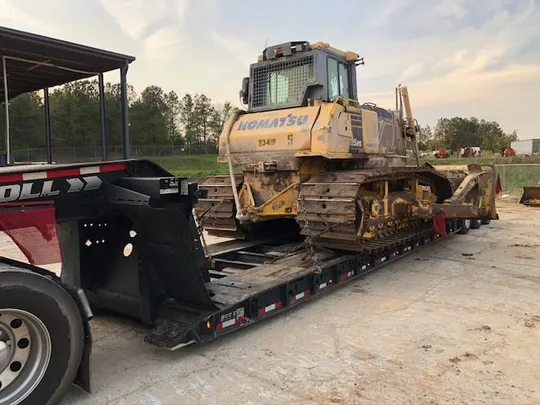This year, March had a particularly bad start due to inclement weather in the northern states that affected WA, OR, CO, and New England. We had heavy snowfall, high winds, and even tornadoes. In addition, the US faced four or more heavy weather waves that moved from west to east, starting in February, and this only ended a few weeks ago.
But besides the specifically lousy weather during March 2023, March has a unique “weather” feature every year. I am referring to the “thaw laws.” Thaw laws address the condition of roads during the thawing season and are regulated by counties. According to ATS Leah Kueckle, “there are no federal guidelines for thaw restrictions, and each jurisdiction sets its regulations based on local climate patterns and road types. That means restrictions may only last six weeks in some areas, while others may last more than four months.” In other words, certain roads in the northern states but even in NV and NM can be off-limits due to thaw laws or require costly special permits.
What impacts oversize loads in March are infrastructure and construction projects which require oversize load trucks. And as I mentioned in my earlier article, wind energy transport also starts in March if the weather permits it. In short, wind energy and infrastructure projects start up where thaw laws or statewide inclement weather restrictions have ended.
Weather is not the only driver of the winter lull. Despite the potential bad weather, December often has quite a lot of demand for oversize loads. December 2022 was especially busy. What was driving this?
Large Equipment Purchase
If you have purchased equipment, you will want it before the end of the year to obtain the IRS Bonus Depreciation. Bonus depreciation allows businesses to deduct a more significant percentage of the cost of their purchased assets the year they are acquired instead of depreciating them for years.
It concerns all large equipment, from construction equipment to farmer equipment and generators, transformers, or control centers, to mention a few. It can be as high as a whopping $500,000!
But here comes the bummer – 2022 was the last year this significant deduction was available. For the coming years, it will drop year after year: 2023 – 80%, 2024 – 60%, 2025 – 40%.
Combine this with the mild December we have had in the past years, which explains the rush to complete purchases before the year’s end.
On the opposite side of large equipment purchases is the inventory of large equipment by the manufacturer. Inventory is tax-free in most states (except KY and MI). He may or may want to get rid of his equipment after the end of the year. His incentive, however, is cash flow.
Inventory is the opposite of cash flow. Cash flow is critical to a business. If it has adequate cash flow, its flexibility is higher, and its response to market situations is quicker. If it doesn’t have cash flow, its ability to operate is reduced because it needs more money to respond or invest. The money is stuck in the inventory that has yet to be sold.
So, if he needs cash, he’ll also be interested in delivering before the end of the year.
In Summary:
- The oversize load business is growing in March because the weather is improving. Another driver is infrastructure projects that need equipment by February or early March to start on time. It also applies to Windmill transportation, and please read this article because it ain’t as rosy as you might think.
- Although December weather may inhibit oversize load transportation, it is often driven by tax incentives that buyers of large equipment want to take advantage of.


